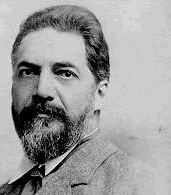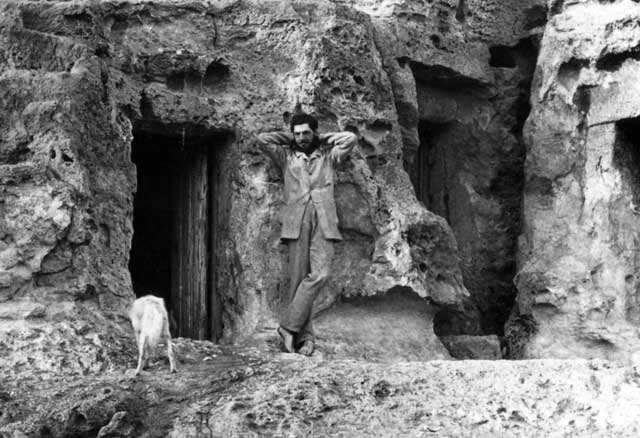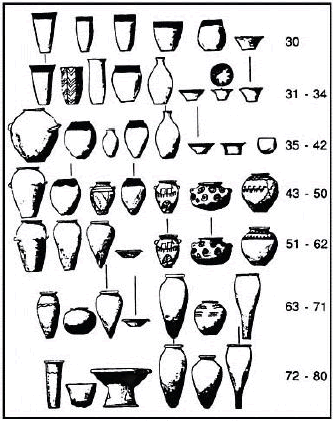Flinders Petrie
archaeologist
 Flinders Petrie was a
British Archaeologist and Egyptologist. Born on June 3rd, 1853 in
Charlton, Kent. He was given the name is William Matthew Flinders Petrie. Petrie's mother, Anne, had a
love for science, namely fossils and natural minerals. Mrs. Anne Petrie was a daughter of
Captain Matthew Flinders, who was a celebrated early explorer of the coasts of Australia.
Flinders Petrie was a
British Archaeologist and Egyptologist. Born on June 3rd, 1853 in
Charlton, Kent. He was given the name is William Matthew Flinders Petrie. Petrie's mother, Anne, had a
love for science, namely fossils and natural minerals. Mrs. Anne Petrie was a daughter of
Captain Matthew Flinders, who was a celebrated early explorer of the coasts of Australia.
Petrie taught himself trigonometry
and geometry at a young age, with particular interest in varied standards of
measurements. Petrie's father was a surveyor who taught his son how to use the most modern surveying
equipment of the time. Petrie would go about England measuring Churches, buildings, and
ancient megalithic ruins, such as Stonehenge.
At thirteen, he read Piazzi Smyth's Our Inheritance in the Great
Pyramids; his interest flourished from this young age and
Petrie convinced himself that he would one day see the pyramids for
himself.
Flinders began as a Practical
Surveyor in south England. During this time he reverted back to studying
Stonehenge. He was able to determine the unit of measurement used for the
construction of Stonehenge, so in 1880, at the age of 24, Flinders Petrie published his
first book called Stonehenge: Plans, Description, and Theories; this book
would become the basis for future discoveries at that site. That same year, he
began his more than forty years of exploration and examination of Egypt and the
Middle East.
From 1880 to 1883, Flinders Petrie studied
and excavated The
Great Pyramid of Giza.
During these times he spent some two years using an old rock-tomb as his residence and base of operations.

"I had a doorway in the middle into my living room, a window on one side for my bedroom, and another window opposite for a store-room.
I resided here for a great part of two years; and often when in draughty houses, or chilly tents, I have wished myself back in my tomb.
No place is so equable in heat and cold, as a room cut out in solid rock; it seems as good as a fire is in cold weather, and deliciously
cool in the heat."
Flinders Petrie
He was very meticulous and took his time during his
excavations, he studied every shovelful of soil. Such painstaking methods led
him to be known as one of the great innovators of scientific method in
excavation.
In 1884 Flinders Petrie discovered
fragments of the statue of Ramses
II during his excavation of the Temple of Tanis.
Petrie spent the next two years
performing excavations of two Nile Delta sites at Naukratis and Daphnae. Here,
he uncovered pottery and was able to prove that both of these sites were former
ancient Greek trading posts. From this excavation he developed a sequential
dating method that would enable him to determine the chronology of any
civilization by pottery fragment comparison.

Pottery styles have tended to change gradually over time, pottery is breakable through mischance or misuse. Its fragmentary remains can nevertheless
endure as broken potsherds, to become available to archaeologists perhaps thousands of years after being discarded.
Petrie's seriational ordering of pottery styles featured seven successive stages. Each stage was held to be linked to its
predecessor by at least one similar shape (as indicated here by vertical lines).
Pots designated by Petrie as being "wavy-handled" are shown at the left on each of the lower five rows. This sequence of inheritance, in Petrie's view,
offered the key inferences in his seriation dating scheme.
In the course of a brief interlude in Palestine,
a six-week season of excavations at Tell el-Hesi in the spring of 1890, he introduced into Palestine the
concept that a Tell is a manmade mound of successive, superimposed 'cities'.
He established the dating of these 'cities' by means of their associated deeply stratified ceramic remains
and of the "cross-dating" of these remains with reference to similar finds made in their Egyptian contexts.
Petrie sponsored investigations that followed the stratification of a site in relation to such establishable chronologies.
Over the next forty years, Flinders Petrie
explored and excavated over thirty sites in the Middle East. Of his most
famous finds was a Stele of Mernepath at Thebes which contains the earliest
known Egyptian references to Israel (1236-1223 B.C.).
Although Flinders Petrie was primarily
self-taught and had no formal schooling, he was made Edwards Professor of
Egyptian Archaeology and Philology at University College, London in
1892. This chair had been posthumously funded by Amelia Edwards who had been a keen supporter and admirer of Petrie. He was also the founder of The Egyptian Research Account, in 1894, (which
eventually became the British School of Archaeology in 1905). Duing his career he also
wrote over 100 books and nearly 900 articles and reviews. A work of particular
importance being his work entitled "Methods and Aims of Archaeology," published in 1904. Flinders Petrie was popularly awarded the
title of "The Father of Modern Archaeology."
1923 saw Petrie knighted for services to British archaeology and Egyptology. In 1927, Flinders Petrie returned to
Palestine uncovering ruins and remained there until his death at the age of
eighty-nine. He passed away in Jerusalem on July 28, 1942.
|
|
![[famous, archaeologist, archaeology]](../local/enlightenment.gif)
![[famous, archaeologist, archaeology]](../local/enlightenment.gif)